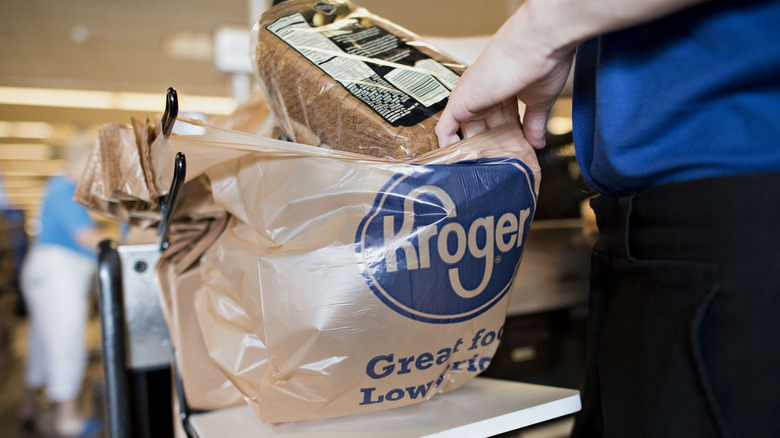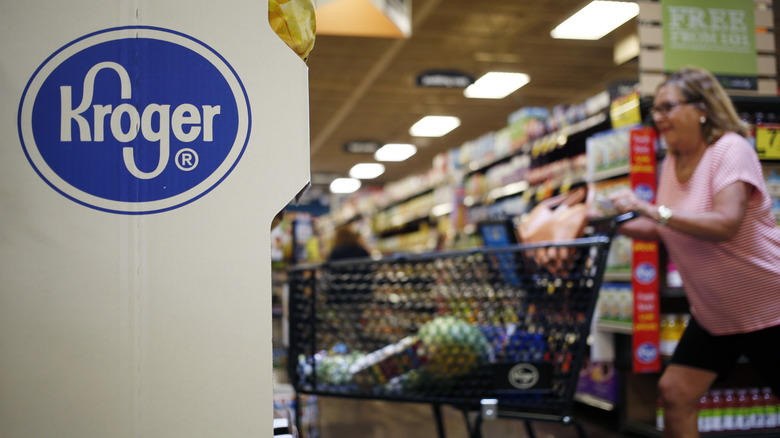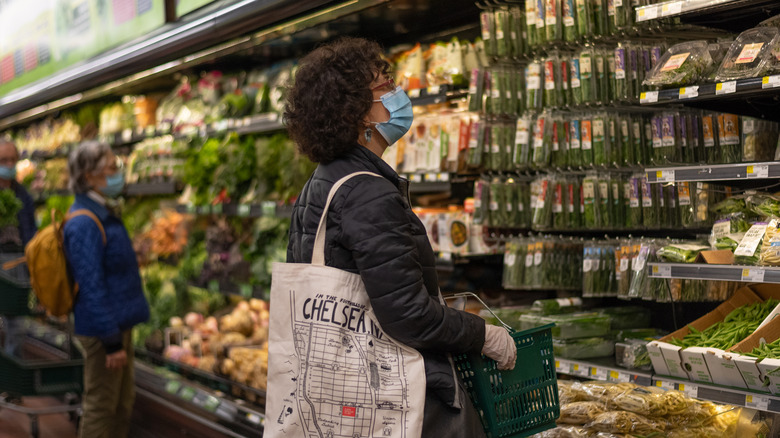How Kroger Is Trying To Retain Customers Despite Inflation
Even if you aren't paying attention to the news cycle, you likely still know that prices are higher than they have been in a very long time — so long in fact that the last time U.S. shoppers experienced inflation like this Ronald Reagan was president (via NPR). But sky-high prices are no laughing matter for consumers or retailers, some of whom, like Target and Walmart, paid for their miscalculations with their balance sheets.
Still, there are those that have managed not just to keep themselves from going under, but to thrive — and per The Motley Fool, one of them is Kroger. The grocery chain reported 16% growth in adjusted operating profit during its most recent quarter. To do this, it looked to the customers themselves to determine what factors were attracting them to Kroger stores.
Kroger is looking at the way people shop
During an earnings call, Kroger Chairman and Chief Executive Officer Rodney McMullen said that inflation had led customers to reevaluate their spending, and as a result, stores were seeing different ways customers chose to cope with rising prices, per The Motley Fool. Perhaps surprisingly, McMullen said: "Many customers continue to shop premium products throughout the store."
McMullen added that "For other customers whose budget are more directly impacted by food and fuel inflation, they are actively looking for ways to save. We're doing everything we can to help this customer stretch their budgets." During the call, Kroger explained that it meant offering generous membership programs, promotions, and by developing its private label, which one analyst pointed out is "growing two times the rate of national brand."
For the grocery store chain, it also meant using forecasting and analytical tools to determine what the customers wanted. And as customers began turning their backs on digital delivery to go back to shopping in brick and mortar stores, McMullen said the grocery chain had developed technology that allowed it to be more responsive to customers' needs, cutting back on waste.
Aside from all this, the CEO said the chain is looking to avoid raising prices for customers by avoiding cost increases, even as it seeks to cut expenses (via The Wall Street Journal).
People want to shop at Kroger in person
Kroger's ability to pivot from clicks to bricks helped it avoid the problems that other retailers might have experienced, particularly since many predicted once people had a taste of e-commerce, they wouldn't return to in-person shopping. But rumors of the death of in-person shopping may have been greatly exaggerated. As Brian Nagel of Oppenheimer and Co. told CNN, "As the pandemic has subsided, you're seeing consumers get back to their pre-pandemic activities. Consumers see benefits to shopping in stores."
As a result, Kroger avoided a number of problems that had hit other online retailers like Amazon, which found itself overstaffed and with too much warehouse space as shoppers returned to their pre-COVID routines. Unlike many of its peers, Kroger struck big during a quarter when its fellow groceries were struggling; and as a result, it reported quarterly sales were up $44.6 billion, while profit was at $664 million, per The Wall Street Journal.
Kroger's stores include regional chains like Ralph's, Fred Meyer, Mariano's, City Market, and King Soopers, among others.


